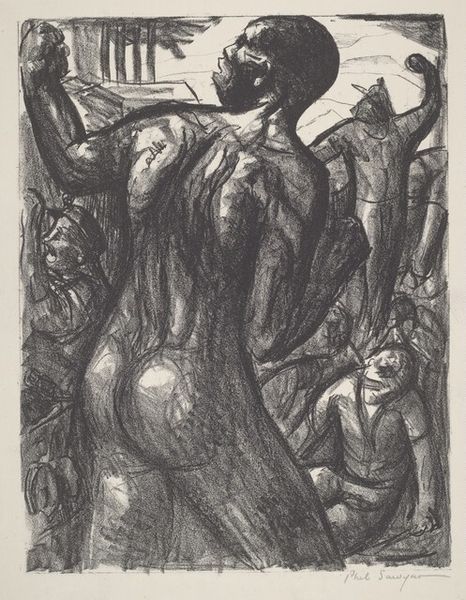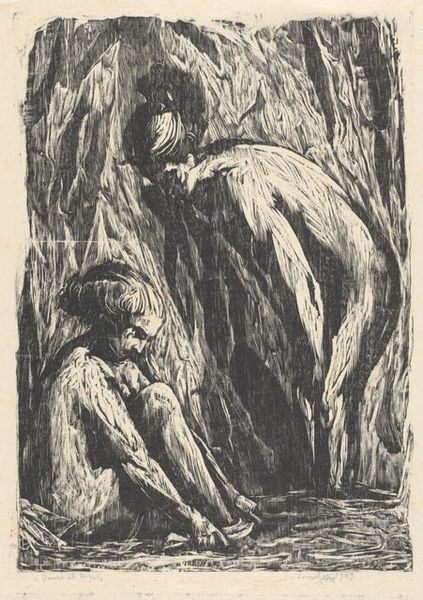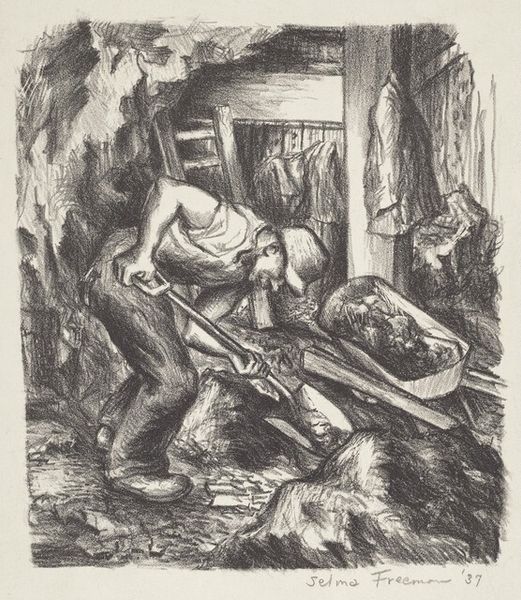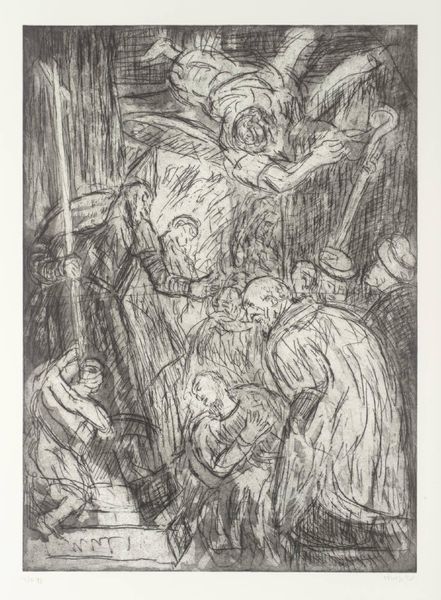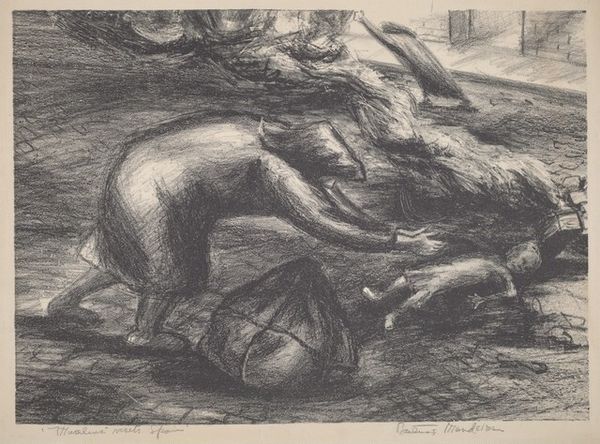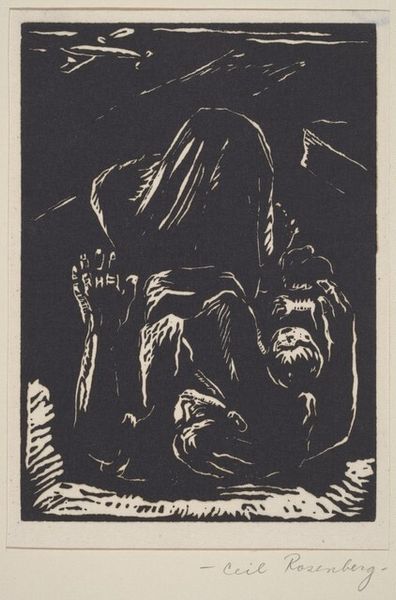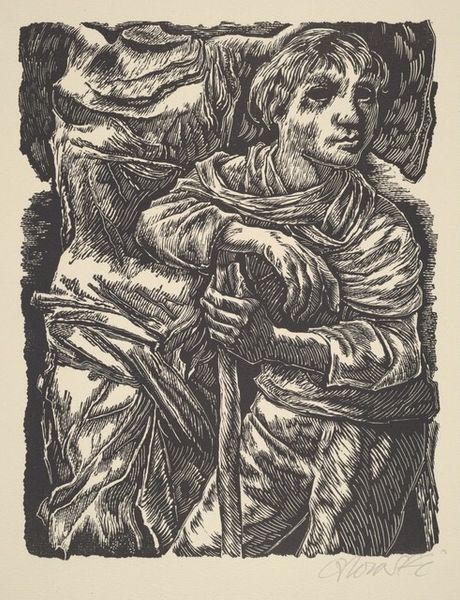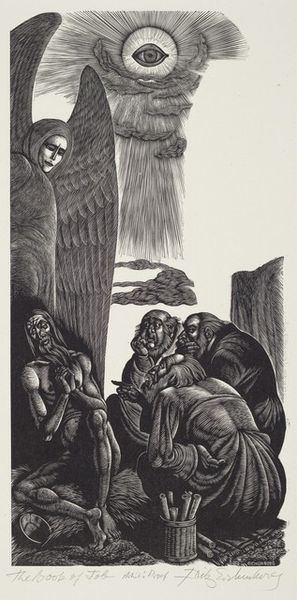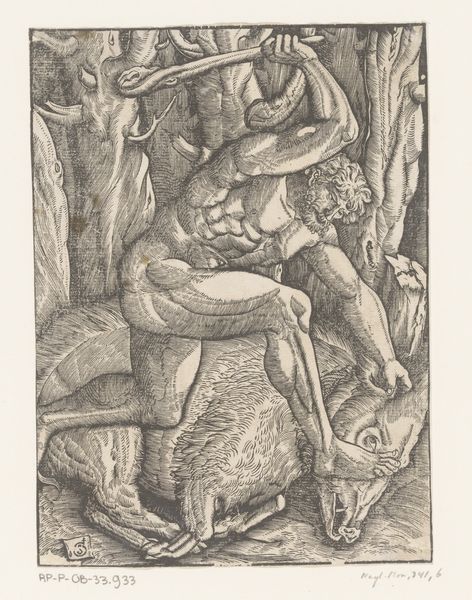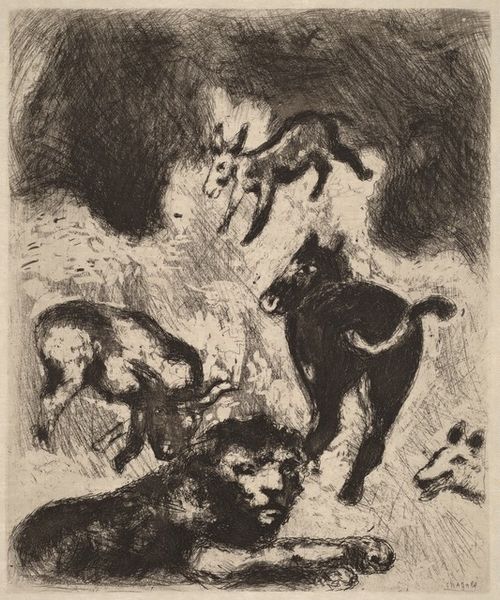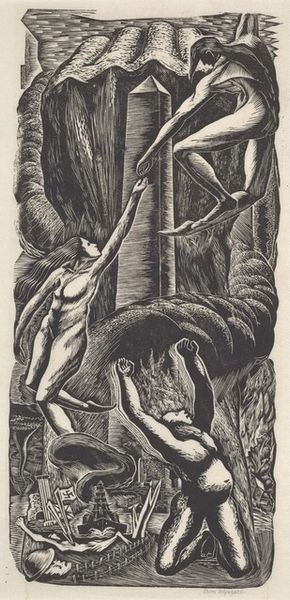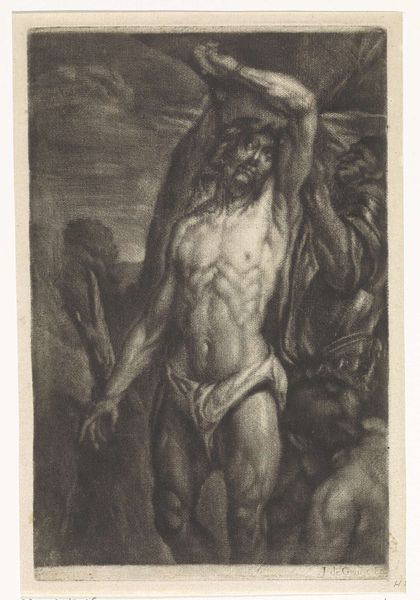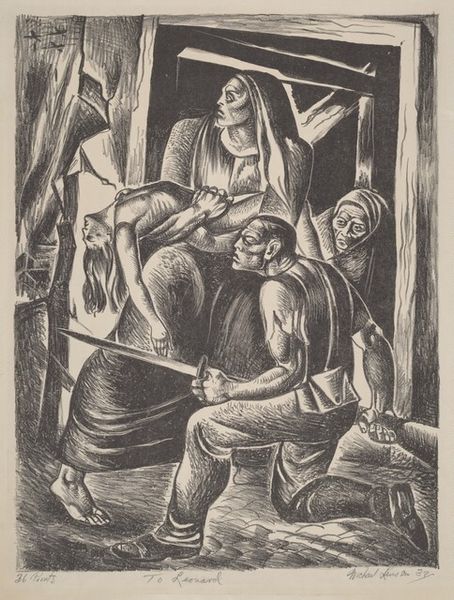
Dimensions: image: 336 x 331 mm sheet: 402 x 300 mm
Copyright: National Gallery of Art: CC0 1.0
Curator: This stark image is entitled "Pieta," a print made circa 1934 by Jan Gelb. What are your initial impressions? Editor: Utterly bleak. The monochromatic palette emphasizes the raw sorrow etched onto the figures, their bodies intertwined in a tableau of grief. The use of stark contrasts only intensifies this mood. Curator: Indeed. Gelb’s choice of the Pieta theme, a common artistic subject depicting Mary cradling the dead Christ, is powerfully reinterpreted here, isn't it? Look at how she is drawing from religious art history to depict this devastating image. Editor: Absolutely, and consider how Gelb deviates from the classical composition. Instead of serene acceptance, we see unrestrained agony. Note how the jagged lines defining their bodies contribute to a sense of unease, while the chiaroscuro amplifies the somber and oppressive atmosphere. Curator: Placing this artwork within its historical context, during the interwar period, reveals another layer of meaning. As the social and political conditions deteriorated in Europe, many artists reflected the increased social issues and challenges within their own societies. Editor: The hanging noose visible in the background really contextualizes this subject. That subtle yet visually provocative symbol does not allow you to look away from the image's central focus. Curator: Yes, the noose undeniably situates the depicted grief and death within a framework of racial violence, referencing lynching and injustice against Black communities in the United States. Editor: Furthermore, examine how Gelb employs foreshortening to emphasize the lifeless body, making it jut outwards. Our eye is led towards the pain etched in the woman’s facial features and down to the bound feet, creating a visual loop that traps the viewer in a cycle of mourning. Curator: A poignant analysis. What resonates most for me is the artwork’s capacity to connect a specific historical tragedy with a timeless, universal expression of human suffering. Editor: Ultimately, the success of "Pieta" resides in its ability to utilize formal artistic techniques to create a deeply emotional and lasting socio-political commentary.
Comments
No comments
Be the first to comment and join the conversation on the ultimate creative platform.
